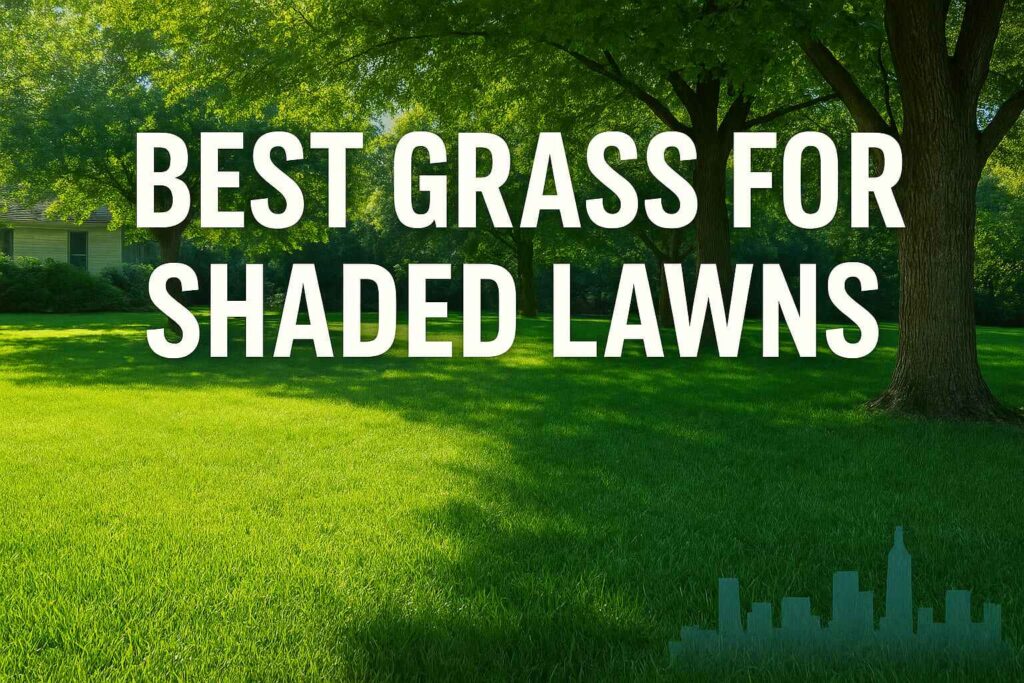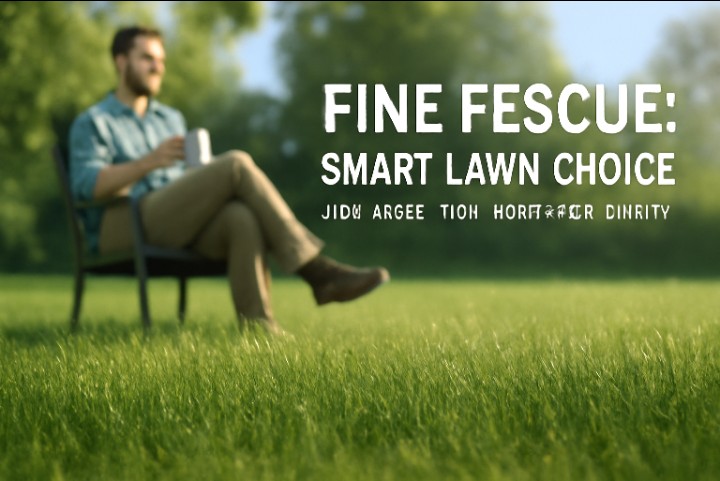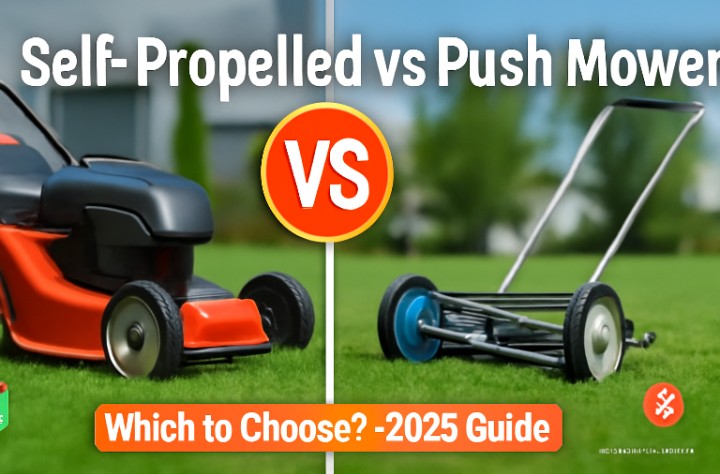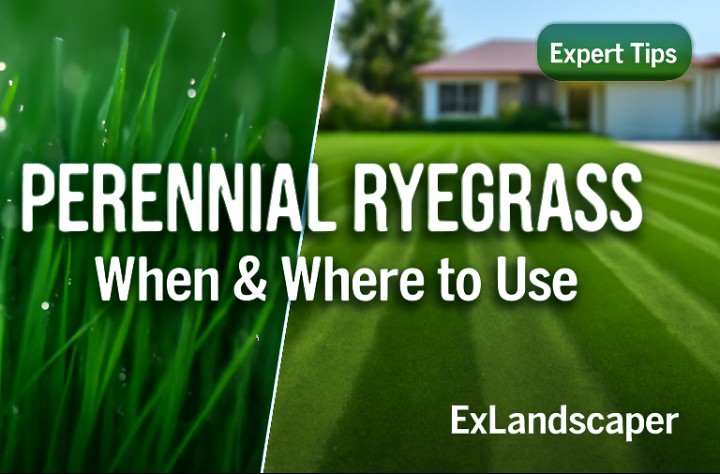Ever walked past your neighbor’s lush green lawn and wondered how they did it? Especially under those big trees where your grass looks more like a patchy disaster?
I get it. Living in places like Seattle or Denver means dealing with tricky shade issues. Your beautiful maple trees create this gorgeous canopy. But underneath? That’s where the lawn struggles begin.
Here is the thing: Fine fescue is your best friend for shaded spots. This tough little grass actually loves the shade. Down south in places like LA? St. Augustine grass works magic with just four hours of sun.
Look, you do not need to settle for bare dirt under your trees. Let me share what actually works.
Why Our Western Lawns Are So Darn Challenging
Think, You are in downtown Portland. Tall buildings everywhere casting shadows. Add those gorgeous street trees we love so much. Now throw in water restrictions during summer. Yep, it’s complicated.
Up in the Pacific Northwest
My friend Jake in Seattle knows this pain. “Every winter it’s soggy. Then summer hits and everything dries out.” His Douglas fir trees? They’re basically vacuum cleaners for nutrients. Meanwhile, moss creeps in where grass gives up.
Portland folks deal with the same headaches. Those beautiful days in the Willamette Valley? They come with a price. Native maples drop serious shade right when grass wants to grow.
California’s Got Its Own Problems
San Francisco’s fog makes everything dim and weird. LA deals with brutal heat plus “Hey, don’t water too much!” San Diego? They are juggling drought rules with shade needs.
Mountain West? Whole Different Beast
Denver sits way up there at 5,280 feet. The air’s thin and UV rays are intense. Salt Lake City throws alkaline soil into the mix. Phoenix? Well, that desert heat will fry most grass types.
City life makes it worse. Car exhaust settles on everything. Hot concrete reflects heat back up. Kids and dogs compact the soil just by living life.
The Real Deal About Shade and Grass
Not every grass handles low light the same way. It’s like people – some thrive in dimmer conditions, others need full sunshine to be happy.
What’s Really Happening
Grass makes food from sunlight. Less light means less food. Weak plants get sick easier and wear out faster.
Your Trees Are Competitive
That gorgeous Colorado blue spruce? It’s not just blocking light. Those roots are grabbing water and nutrients before your grass gets a chance. Trees usually win this fight.
The Magic Number
Most shade-loving grass needs 4-6 hours of filtered sun daily. Less than that? You are fighting uphill. Time to think about other options for super dark spots.
The Champions of Shady Spots
Fine Fescue: The Shade Superhero
Aaron Patton from Purdue University says fine fescue is “arguably the most shade-tolerant grass out there.” This guy knows grass. Trust him.
Why This Stuff Rules
Those roots go deep – like, really deep. They find water other grass can not reach. The leaves are narrow so they don’t lose much moisture. Plus? Low maintenance. Perfect for busy people.
The Stars of the Show
– Hard Fescue: Laughs at Denver’s crazy weather
– Chewing Fescue: Actually handles some foot traffic
– Red Fescue: Spreads on its own to fill gaps
Works Best In: Seattle, Portland, San Francisco, Denver
Sarah from Beaverton told me, “I planted hard fescue under our massive oak two years ago. Still thick and green!” That’s what I’m talking about.
Tall Fescue: The All-Around Winner
This grass is like that reliable friend who handles everything. Heat? Check. Drought? No problem. Shade? You bet.
Why It’s Awesome
Roots go 3-4 feet down. That’s deep enough to compete with trees. Kids can actually play on it without destroying everything.
The Best Varieties
– Rebel IV: Perfect for those drizzly Northwest days
– Falcon IV: California’s drought-buster
– Olympic Gold: Fights off diseases like a champ
Perfect For: Areas with mixed sun and shade, busy yards, water-wise folks
Mark in Sacramento switched three years back. “My water bill dropped 30 percent. The lawn still looks amazing under our valley oaks.”
Perennial Ryegrass: The Speed Demon
Need results yesterday? This grass pops up fast and fills in quick. Great for fixing bare spots in a hurry.
What Makes It Special
– Shows up in 5-10 days (seriously!)
– Decent shade tolerance for quick fixes
– Plays nice with fescue varieties
– Perfect for spring touch-ups
The Reality Check
It’s thirstier than fescue types. Needs more water getting started. Works best mixed with other grass, not alone.
For the Warmer Spots Down South
St. Augustine Grass: The Shade Champion
If you are in Southern California or Arizona, this is your go-to. Handles partial shade way better than Bermuda or Zoysia.
How It Handles Shade
Does fine with just 4 hours of direct sun. Those wide, flat leaves grab every bit of available light. Loves the southwestern heat too.
The Winners
– Sapphire: Tough enough for cooler areas
– Palmetto: Drought fighter extraordinaire
– Seville: Stays compact with great color
Jessica in San Diego swears by Palmetto. “Stays green under our jacaranda trees while everyone else’s lawns look rough.”
Zoysia Grass: The Patient Perfectionist
Zoysia takes forever to fill in. But once it does? Dense, carpet-like perfection. Super drought-tough too.
What You Get
– Crazy drought-tolerant once established
– Grows so thick weeds can’t break through
– Needs way less water than most grass
– Handles heat and humidity like a boss
The Catch
Plan on 2-3 years for full coverage. Costs more upfront. But maintenance costs drop big time later.
What Works Where: City by City
Seattle, Washington
The rain city has its own special needs. Wet winters, dry summers. You know the drill.
My Recommendation: 60% hard fescue, 40% chewing fescue blend
For High Traffic: Add some tall fescue
Spring Touch-ups: Perennial ryegrass
Places like Dennis’ 7 Dees nursery suggest this mix for neighborhoods with mature trees.
Portland, Oregon
Like Seattle but with more summer heat. Focus on varieties that hold moisture.
Best Move: Fine fescue as your base with tall fescue accents
Super Dark Areas: Maybe try moss gardens or native groundcovers
Plant When: Early fall works best here
San Francisco Bay Area
Fog and weird microclimates everywhere. One block’s different from the next.
Near the Coast: Fine fescue loves that fog
Inland Areas: Tall fescue handles temperature swings
Going Native: California sedge for eco-friendly options
Los Angeles and SoCal
Heat and water cops make decisions for you here.
Beach Areas: St. Augustine (Palmetto type)
Inland Valleys: Tall fescue for cooler spots
Desert Edge: Zoysia for maximum water savings
Denver, Colorado
High altitude plus alkaline soil equals headaches.
Go-To Choice: Tall fescue (Rebel IV variety)
Low Traffic Spots: Fine fescue saves water
Special Note: Pick high-altitude adapted types
Local extension folks have lists of what actually works in Colorado’s wild conditions.
Getting It Done Right: Installation Tips
Prep Work That Matters
Test Your Soil First
Western soil runs alkaline usually. Test pH before doing anything. Grass likes 6.0-7.0 range. Add sulfur if numbers are too high.
Check Water Flow
Poor drainage kills more grass than shade does. Watch what happens after big rains. Water sitting 24+ hours? Install drainage.
Work Around Tree Roots
Don’t fight established trees. You will lose. Work around major roots instead. Maybe raise the soil level a bit.
Seed vs. Sod: The Big Decision
Seeding Wins On:
– Budget (costs 1/3 what sod does)
– More variety choices
– Roots grow deeper from day one
Sod Wins On:
– Instant gratification
– Better on slopes
– Higher success rate in tough spots
Money Talk:
Seeding runs $0.10-0.30 per square foot. Good sod costs $0.50-1.50 per square foot. Factor in your time too.
When to Plant
Spring (March-May)
– Soil’s got winter moisture
– Temps aren’t crazy yet
– Full growing season ahead
Fall Rocks (September-November)
– Fewer weeds competing
– Cooler weather means less watering
– Roots develop before winter
Summer = No
Skip June through August in most western spots. Heat kills baby grass fast.
Keeping Your Shade Lawn Happy
Watering Like a Pro
Go Deep, Not Often
Water deeply 2-3 times weekly instead of every day. Makes roots go deeper. Daily shallow watering creates wimpy grass.
Morning Is Best
Water between 6-10 AM if possible. Less evaporation. Grass dries before evening. Prevents disease problems.
Follow the Rules
Lots of western cities limit watering days. Plan accordingly. Maybe try drip irrigation for trees and grass together.
Smart Controllers Pay Off
Weather-based systems adjust automatically. Soil sensors prevent overwatering. Costs pay back through water savings.
Feeding Shaded Grass
Less Is More
Shaded grass needs 25-50% less nitrogen than sunny lawns. Too much nitrogen causes disease in low light.
Slow and Steady
Use 3-4 month slow-release fertilizers. Steady nutrition without growth spurts. Means less mowing too.
Seasonal Game Plan
– Spring: Light feeding when growth starts
– Summer: Skip it or go super light
– Fall: Moderate feeding for root growth
– Winter: Nothing needed most places
Mowing Smart
Cut Higher
Set mower 1/2 inch higher for shaded spots. Taller grass catches more light. Deeper roots result too.
Keep Blades Sharp
Dull blades tear instead of cutting clean. Torn tips turn brown and get diseases. Sharpen twice a year.
Mow Less
Shaded grass grows slower. Cut 25-30% less often. Let grass recover fully between cuts.
When Things Go Wrong
Trees Win, Grass Loses
Sometimes the environment just won’t support grass. Extreme shade plus root competition plus poor air flow equals impossible.
Red Flags:
– Less than 4 hours filtered sun daily
– Surface roots everywhere
– Soil always wet or bone dry
– You have tried before and failed
Better Ideas:
Mulch paths look great. Shade groundcovers work better. Seating areas under big trees rock.
Moss Taking Over
Moss means acidic soil and too much moisture. Fix the cause, not just the symptom.
Real Solutions:
– Improve drainage if soil stays soggy
– Add lime to raise pH
– Prune for better air flow
– Overseed with right grass types
Thin Spots Everywhere
Quick Fix:
Overseed thin areas each spring with perennial ryegrass. Quick coverage while permanent grass fills in.
Long-term Fix:
Find and fix root problems. Compacted soil needs aeration. Poor drainage needs correction. Wrong grass needs replacement.
Beyond Regular Grass
Native Alternatives That Work
Buffalo Grass for Transition Areas
Handles drought amazingly well. Way less maintenance. Good for Denver-type climates.
Blue Grama for Mountains
Native to western plains and mountains. Extremely drought-tough once going. Cool texture too.
Pacific Northwest Sedges
California sedge and relatives thrive in shade. Need less water than regular grass. Local wildlife loves them.
Non-Grass Options
Deep Shade Champions:
– Wild ginger makes lush carpets
– Sweet woodruff spreads naturally
– Ajuga creates colorful mats
Moderate Shade Winners:
– Creeping thyme handles light foot traffic
– Vinca minor stays green year-round
– Pachysandra works in cooler areas
Mix It Up
Grass Plus Groundcover
Use grass where there’s decent light. Plant groundcovers in darker spots. Natural transitions look great.
Seasonal Approach
Accept that some areas look better certain times of year. Focus energy on main viewing areas.
Add Hard Surfaces
Permeable patios with planted areas. Less maintenance plus more function. Especially nice under big trees.
What It will Cost You
Upfront Investment
Budget-Friendly Seeding:
Fine fescue seed: $3-5 per pound (does 1,000 sq ft)
Site prep: $500-1,500 for average yard
Total: $1,000-2,500 for typical backyard
Premium Sod Route:
Quality shade sod: $0.50-1.50 per square foot
Professional install: $1.00-2.00 per square foot
Total: $3,000-7,000 same area
Return on Investment:
Good lawn adds 5-15% to home value. Water-wise types cut ongoing costs. Pro maintenance runs $100-300 monthly.
Water Bill Reality
Traditional Lawn Costs:
Average western lawn: $200-500 yearly in water
High-maintenance types: $500-1,200 yearly
Drought penalties: Extra 25-50% in dry years
Smart Savings:
Fine fescue cuts water use 40-60%. Tall fescue reduces usage 30-50%. Smart irrigation saves another 20-30%.
Rebate Hunting:
Many western utilities pay for grass replacement. Sacramento Municipal Utility District gives $1.00 per square foot. Check what’s available locally.
Planning for Tomorrow
Climate Reality Check
Western cities face bigger temperature swings. Droughts last longer and hit harder. Urban heat islands make everything worse for traditional lawns.
Smart Choices:
Pick heat-tolerant varieties within species. Plan for 2-3°F warmer temps. Choose drought-resistant as first options.
Infrastructure Thinking:
Install smart irrigation now. Plan shade structures for cooling. Consider permeable surfaces to handle runoff.
Tech That’s Coming
Irrigation Evolution
Weather-based controllers becoming standard. Soil sensors prevent overwatering. Smartphone apps let you monitor remotely.
Robot Helpers
Robotic mowers handle routine cutting automatically. Set higher for shade areas. Program around watering schedules.
Health Monitoring
Drone services map lawn health with infrared. Smartphone apps identify problems quickly. Soil testing services give detailed nutrition info.
Going Green
Carbon Benefits
Healthy grass captures carbon from air. Root systems store carbon in soil. Proper care maximizes environmental benefits.
Wildlife Support
Native and adapted grasses support local ecosystems. Fewer chemicals protect beneficial bugs. Diverse plantings create habitat connections.
Regenerative Practices
Organic feeding builds soil health long-term. Composting clippings reduces waste. Rain gardens capture and clean stormwater.
Ready to Get Started?
Want to transform that patchy mess under your trees? Here’s your action plan.
This Month:
– Test soil pH and check drainage
– Watch shade patterns all day long
– See what varieties local nurseries carry
Next Month:
– Order the right seed or sod
– Prep planting areas properly
– Fix any drainage problems
This Season:
– Plant at the best time for your area
– Set up proper maintenance routines
– Keep track of how things develop
Here is the truth: Good shade lawns take patience. But with the right varieties and proper techniques, you absolutely can have that gorgeous green lawn you have been dreaming about.
Your neighbors will wonder what your secret is. Your home value will benefit. Most importantly, you’ll actually enjoy spending time in your yard.
The western climate doesn’t have to beat you. Pick smart, plant right, maintain consistently. Success is totally doable – I promise.






